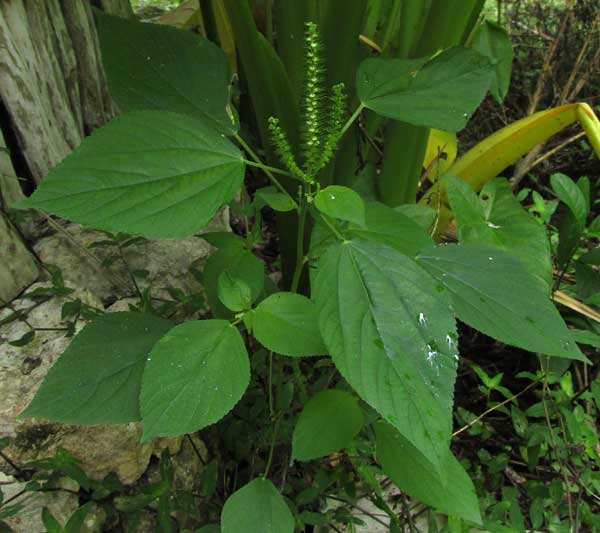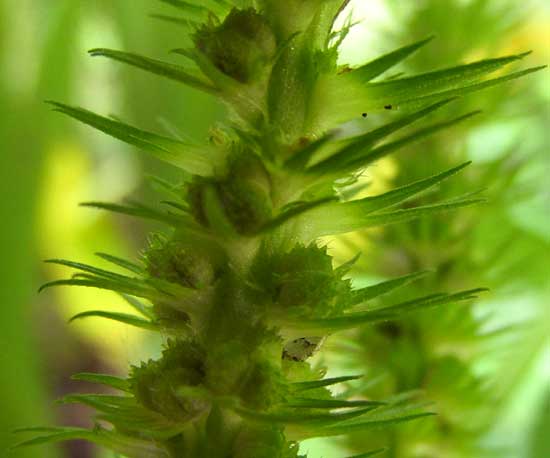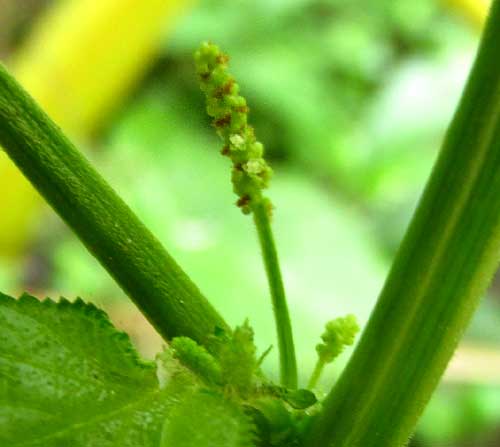Excerpts from Jim Conrad's
Naturalist Newsletter
from the August 21, 2016 Newsletter issued from Hacienda Chichen Resort beside Chichén Itzá Ruins; limestone bedrock; elevation ~39m (~128ft), N20.675°, W88.569°; central Yucatán state, MÉXICO
CUBAN COPPERLEAF
Right beside the hut's door a knee-high plant has sprung up bearing pagoda-like flower spikes above large, broad leaves with long petioles and regularly toothed, or "serrated," margins, as shown below:

Below, a close-up of one of the spikes shows spiny, three-lobed ovaries subtended by deeply cut bracts, or modified leaves, the bracts' divisions forming sharp-pointed bristles:

The above flowers lack male parts, but when you search below the plant's leaf canopy you find pudgy little spikes poking up bearing male stamens, shown below:

Whenever you see separate male and female flowering spikes on a plant, and the ovary is three-lobed, you'd best think of the Spurge or Euphorbia Family, the Euphorbiaceae, and that's what we have here. And when you have a euphorb whose female pistils are each subtended by conspicuous bracts, you should first think of the big, commonly encountered genus Acalypha, and that's also what we have. Acalypha species often are referred to as copperleafs because some of the best known ones display coppery leaves. An ornamental copperleaf much planted here at the Hacienda is profiled at www.backyardnature.net/yucatan/copperlf.htm
Just a couple of weeks ago we looked at Acalypha alopecurioides, a wild copperleaf also growing in the hut's front yard, but with short, fuzzy-looking female spikes instead of this species' tall, slender ones. You might enjoy reviewing that other Acalypha at www.backyardnature.net/mexnat/acalyph2.htm
Our present species is ACALYPHA SETOSA, native from southern Mexico through Central America and the Caribbean into northwestern South America. It's invasive elsewhere, as in the US Southeast. The USDA calls it Cuban Copperleaf, and such alliterative names often stick whether they're appropriate or not, so we'll go along with it.
Cuban Copperleaf frequents open, disturbed areas, especially cut-over forests, abandoned fields, roadsides and streambanks. You can bet that small, seed-eating birds relish the three tiny seeds that drop to the ground when the three-lobed ovaries split open.